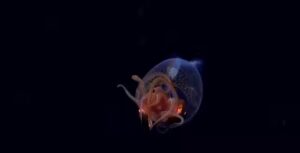Prelims Bits
Context:

A juvenile colossal squid has been filmed alive in its natural environment at a depth of 600 meters in the Southern Ocean for the first time in over a century, marking a significant achievement in marine research.
About the Colossal Squid
What is it?
The colossal squid is the largest invertebrate species known to science, a deep-sea predator that is extremely elusive and rarely seen in its natural surroundings.
- Scientific Name: Mesonychoteuthis hamiltoni
- Class: Cephalopoda (includes octopuses, cuttlefish, and other squids)
- Habitat: Found in the cold, deep waters of the Southern Ocean, especially near Antarctica.
Key Features
- Physical Characteristics:
- Can reach 14 meters (46 feet) in length and weigh up to 500 kilograms (1100 pounds).
- Known for having the largest eyes among all animals.
- Biological Traits:
- Females are larger than males.
- Tentacles feature sharp, rotating hooks for hunting and self-defense.
- Diet:
- Preys on large fish like the Patagonian toothfish, as well as other squids.
- Known to engage in fierce battles with sperm whales.
- Reproduction:
- Details of its mating habits are not fully known, but it reproduces via internal fertilization.
- Juveniles are initially transparent and grow darker as they mature.




